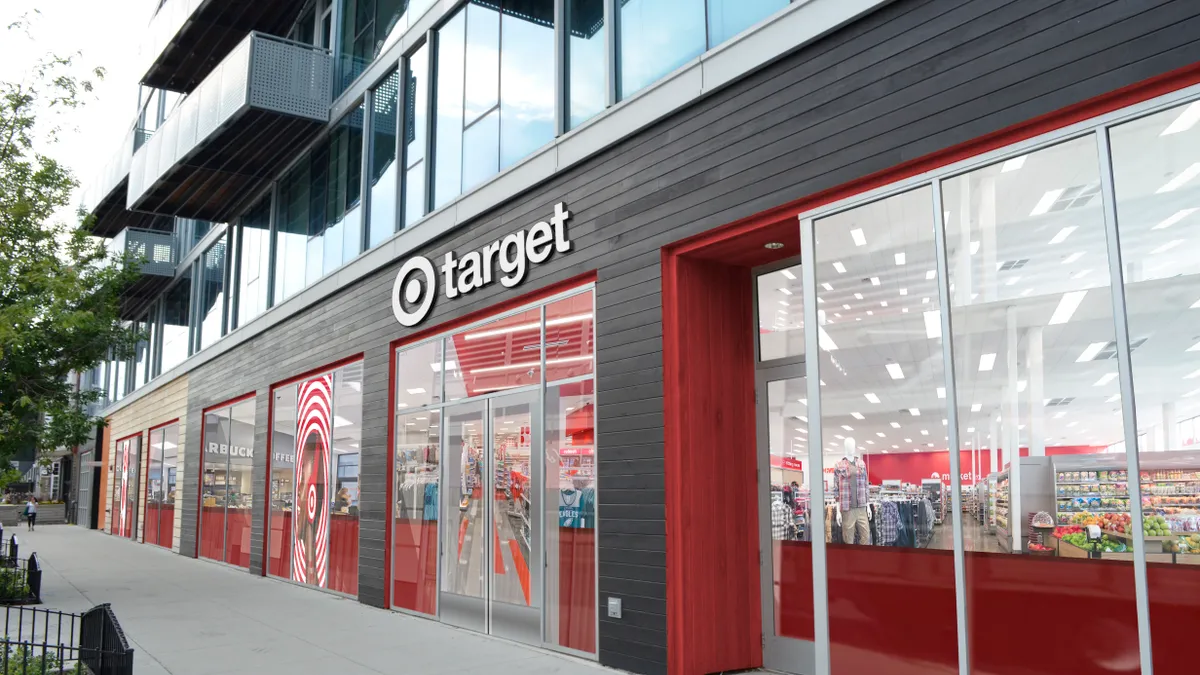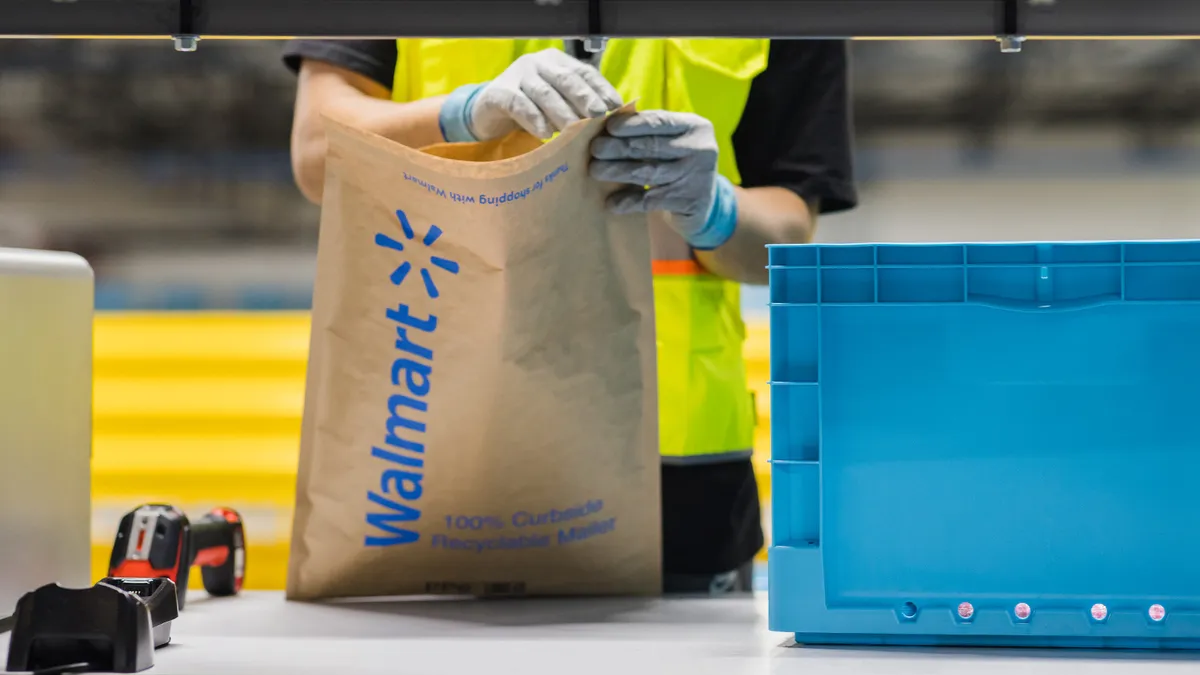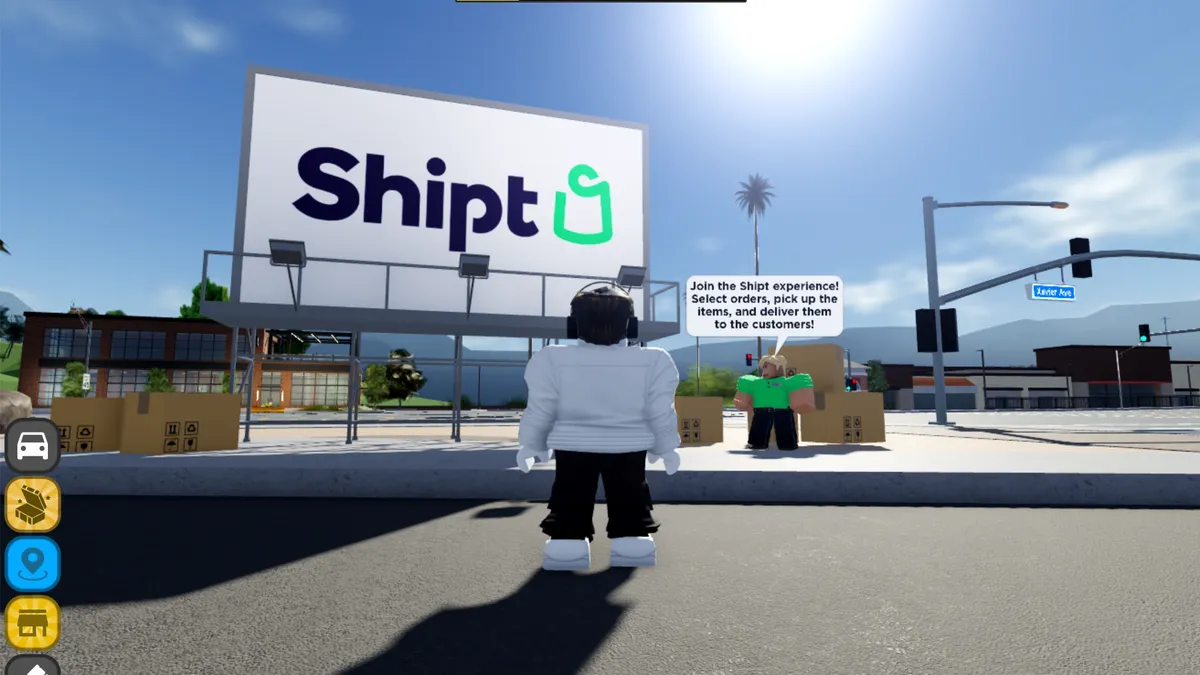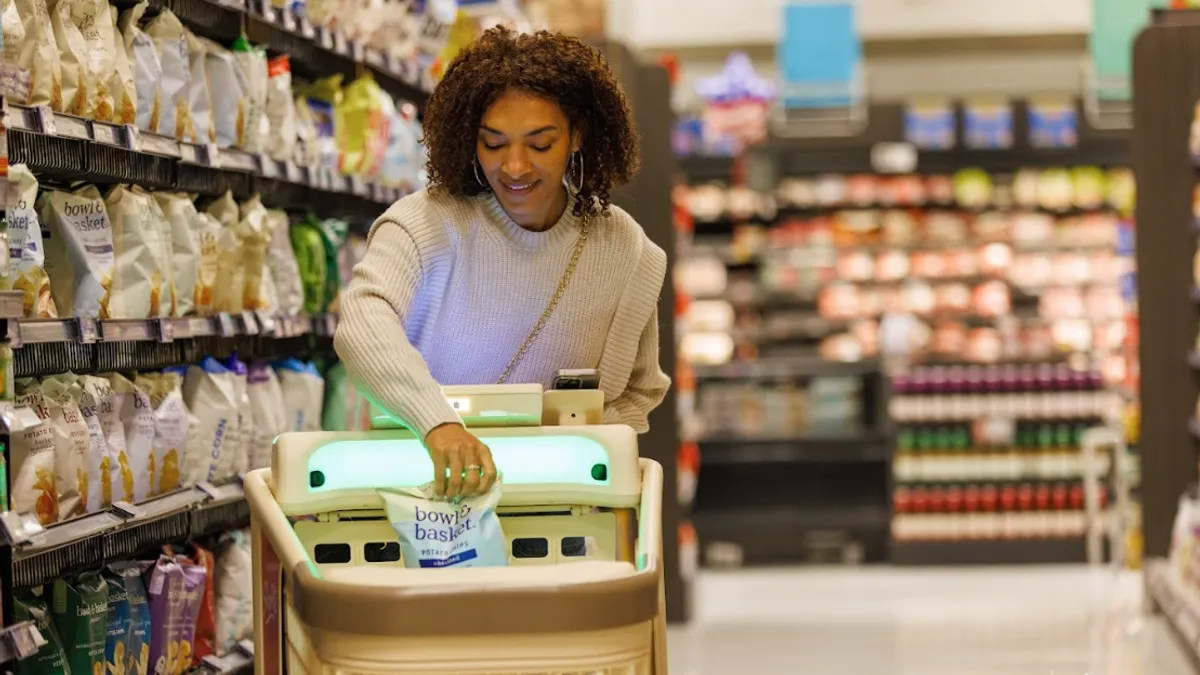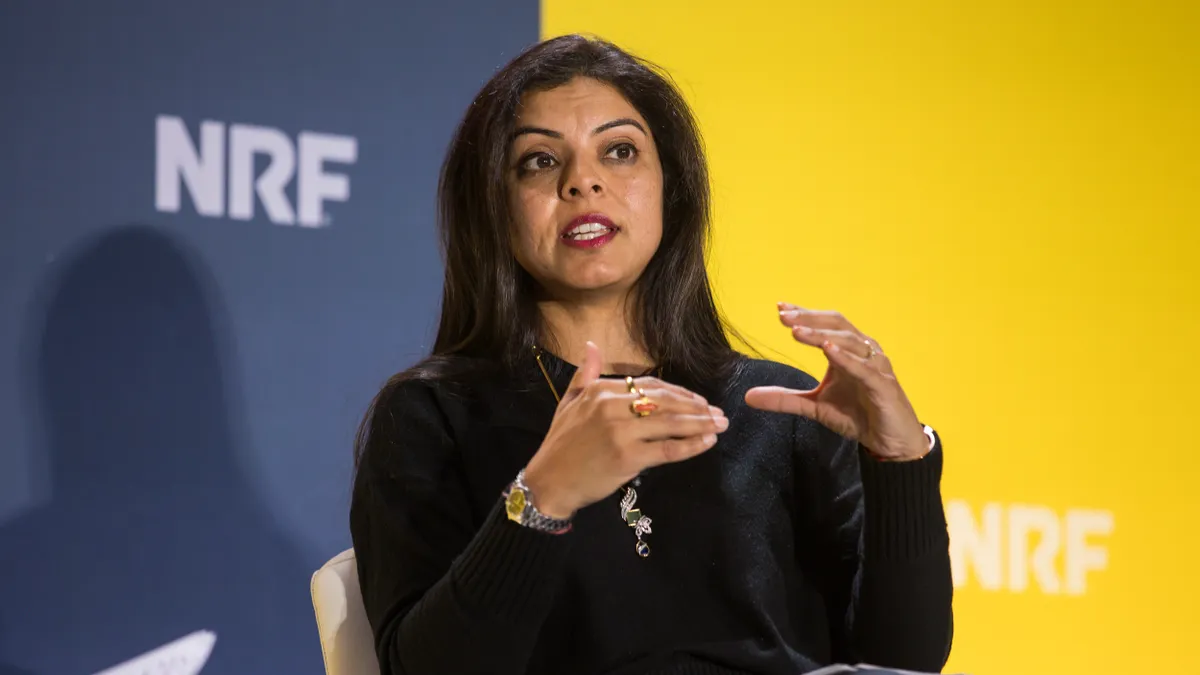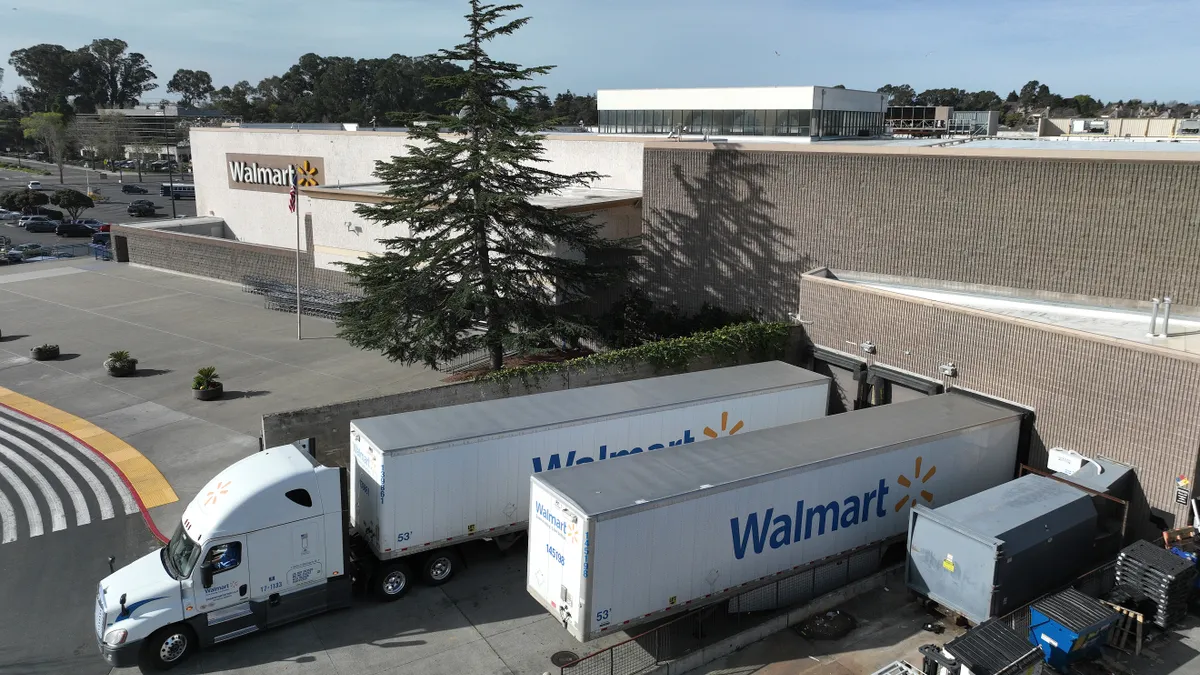Eft's Head of Retail, Priyanka Asera, kicked off the D3 Retail Supply Chain Summit's theme telling the story of how she waited 12 weeks for a cream leather couch, only to call the furniture company and discover it was struggling with production.
Asera waited another 10 weeks. A friend who lived in Asera's building called her one day to say a couch had been left in the lobby — and it looked like the one Asera had ordered almost six months ago.
Sure enough, it was the long-awaited cream leather couch.
"I gave customer service a call and asked, 'what happened?'" Asera told the summit attendees. "Then they put me on hold for 20 minutes with no music in the background then came back and said, our notes indicate your apartment building doesn't have an elevator so we successfully delivered the couch to your lobby."
The problem? Asera's apartment building does have an elevator, right where the couch had been left, and she was not even notified of the delivery.
"The way they tracked their metrics, this wasn't a failed delivery attempt at all," Asera said. "In the process, they were so far removed from me, the customer, that as far as they were concerned, they were all good. And that’s the whole point of this summit."
The rise of e-commerce and increased competition over the last five to seven years has fundamentally changed the way the retail industry works. Companies can no longer afford to be so far removed from the customer as they were in the pre-internet age, because consumer expectations and demands change so rapidly and consumers will readily patronize competitors if they feel ill-used by any one particular retailer.
As JD.com's Vice President of International Corporate Affairs Josh Gartner put it during a panel discussion, to survive the retail apocalypse retailers must think of retail as a service.
Execs adjust logistics tactics to better serve the customer
One topic retailers revisited often at the summit was how to improve logistics to better serve the customer. Retailers have learned their logistics affect the customer's in-store (or online) experience, so streamlining logistics not only affects the bottom line, but also the retailer's brand image and reputation.
Consumer expectations, therefore, are the focus of every retailer's logistics network. For example, Target is combining its store distribution facilities with online fulfillment centers to create what the retailer calls a "flow center," capable of meeting consumer demand for both homes and stores better.
"With key advances in our software, our automation, a flow center is able to send exactly what’s needed when it’s needed," Target's Senior Vice President of Global Supply Chain and Logistics Field Operations Preston Mosier told conference attendees. "That could mean sending five bottles of shampoo with a bottle of ketchup and a pallet of water directly to our sales floor, or it could mean sending similar items directly to a pack station to go out to a guest in the neighborhood."
Mosier said Target is testing its first flow center in Perth Amboy, New Jersey, and "the results have been very impressive. We’ve been able to reduce our backroom inventories to a fraction of the normal (levels) and increase sales."
Customers don’t care what technologies you use, what they care about how they’re impacted on the day of delivery.

Todd Skiles
Senior Vice President of Sales and Solutions, Ryder
In a panel, JD.com's Director of International Communications Lori Chao said demand planning and inventory management are the two big focal points of logistics and operations for JD.com, because together they are the nucleus of customer satisfaction.
To help retailers meet consumer demands, C.H. Robinson has been using internet of things (IoT) sensors to improve delivery of perishable products, but it is a struggle.
"The reason why fresh delivery hasn't accelerated as fast is because of perishability," C.H. Robinson Customer Group Manager Rob Kinsella told our sister publication Supply Chain Dive in an interview. "The majority of the challenges surround inventory management and inventory control."
IoT and blockchain hold great potential for the cold chain, but the technology is only worth the investment if perishable items make it to the consumer unscathed. Right now, the cold chain is struggling with implementation of that kind of tech across every stage of the chain. "Scale is hard, and costing is a different game at that point," Kinsella said.
Furthermore, no matter what you're doing internally to improve your logistics and operations, it's critical not to lose sight of what really matters: customer satisfaction.
"Customers don’t care what technologies you use, what they care about how they’re impacted on the day of delivery," Todd Skiles, senior vice president of sales and solutions at Ryder, told conference attendees.
Inventory management is key to customer satisfaction
Once logistics tactics are updated, savvy inventory management is a tried-and-true way to meet and adapt to consumer demands, securing brand loyalty and profitability as retail competition escalates.
Verizon's Executive Director for Global Supply Chain Strategy Anne Robinson explained how Verizon struggled with inventory management until the company developed an algorithm to examine the relationship between forecasting and actual phone sales.
That algorithm changed the game. Once Verizon tailored its analytics to understand what each brick-and-mortar store needed and adjusted forecasts to meet demand, inventory turns rose.
"We were able to see improved accuracy, inventory levels, and our customer service was improving," Robinson told conference attendees. "We’ve seen the cost per unit of phones increase dramatically, but our inventory cost remained flat."
With key advances in our software, our automation, a flow center is able to send exactly what’s needed when it’s needed.

Preston Mosier
Senior Vice President, Global Supply Chain and Logistics Field Operations, Target
The inventory visibility Verizon developed is a key piece not only to keeping inventory costs down, but also to pleasing the customer. Adopting new technologies, improving logistics and inventory management won't increase a retailer's profitability in the long run if the retailer isn't offering an amazing customer experience as the end goal.
"What’s relevant to the customer? If you place an order, how quickly do you expect that order to be recognized by the company? In seconds," Bill Best, divisional vice president of supply chain operations for REI, said in a panel. "If you’re expecting two-day delivery, and your package hasn't shipped within 24 hours of placing the order, you know it’s not going to get to you in two days. All of these things contribute to friction in the transaction."
Sana Raheem, head of operations for e-commerce dog food startup The Farmer's Dog, says part of the mission of her company is to give their customers — and their dogs — an amazing customer experience. The Farmer's Dog personalizes dog food orders, even including the customer's dog's name stamped on the packages, and uses recyclable packaging to support sustainability efforts.
But the priority of the company's operations is inventory control, she told conference attendees, because that allows the amazing customer experience to happen.
"Anytime you’re dealing with perishable goods, that consumer experience has to be exquisite," Raheem said. "It has to show up to your consumers door ready to eat. It can’t be damaged, and that’s the most important thing from a supply chain perspective. You have to ensure it’s perfect. Inventory control is the priority."


